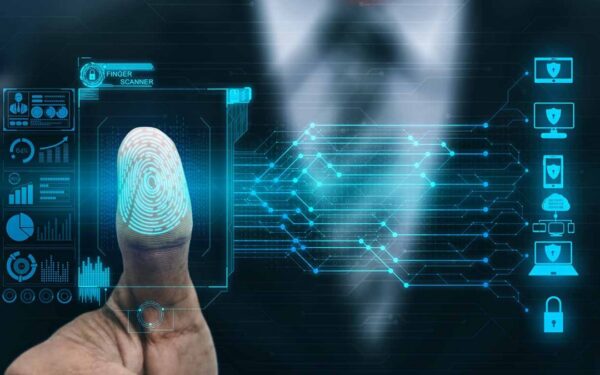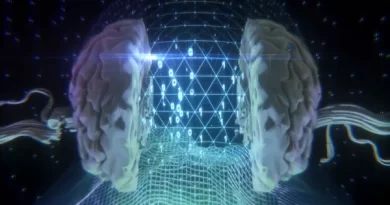Securing the Future: An In-Depth Look at Biometric Authentication
In today’s digital age, the need for robust security measures is more pressing than ever. Traditional password-based systems are giving way to more sophisticated and secure methods, with biometric authentication leading the charge. From fingerprint sensors to facial recognition technology, biometric authentication is transforming how we protect our digital identities.
Understanding Biometric Authentication:
Biometric authentication involves verifying an individual’s identity using their unique biological characteristics. Unlike passwords or PINs, which can be easily forgotten or stolen, biometric traits are intrinsic to each person and highly difficult to replicate. The primary forms of biometric authentication include:
- Fingerprint Recognition: Utilizes the unique patterns of ridges and valleys on a person’s fingerprint.
- Facial Recognition: Analyzes facial features through advanced algorithms.
- Iris and Retina Scanning: Examines the distinctive patterns in a person’s eye.
- Voice Recognition: Identifies individuals based on vocal characteristics and speech patterns.
- Behavioral Biometrics: Monitors unique user behaviors, such as typing rhythm or walking gait.
Why Biometric Authentication is Gaining Momentum:
Several factors contribute to the growing popularity of biometric authentication:
- Enhanced Security: Biometric data is unique to each individual, making unauthorized access significantly more difficult.
- Ease of Use: Eliminates the need to remember complex passwords, allowing for quick and effortless authentication.
- Technological Progress: Advancements in sensors and algorithms have made biometric systems more reliable and accessible.
- Increased Cyber Threats: The rise in cyber-attacks has driven the demand for more robust security solutions.
Diverse Applications of Biometric Authentication:
Biometric authentication is being embraced across various industries, each reaping distinct benefits:
- Personal Devices and Smartphones: Modern smartphones are equipped with fingerprint scanners or facial recognition systems, ensuring secure and easy access.
- Banking and Financial Services: Financial institutions use biometric systems to secure transactions and protect customer accounts.
- Healthcare: Biometric authentication ensures that patient records are kept secure and accessible only to authorized personnel.
- Government and Law Enforcement: Used for secure access to government facilities and aiding forensic investigations.
- Retail: Facilitates secure and seamless payments, enhancing the overall shopping experience.
Addressing Challenges and Concerns:
While biometric authentication offers many advantages, it also faces several challenges and concerns:
Privacy Concerns: The collection and storage of biometric data raises significant privacy issues. It’s crucial that users are confident their data is managed with the highest standards of security and ethical practices.
The Horizon of Biometric Authentication:
As technological advancements continue, the scope and effectiveness of biometric authentication will evolve. Future innovations might include:
- Integrated Multimodal Systems: Combining various biometric methods (such as fingerprint and facial recognition) to enhance overall security.
- Wearable Biometric Sensors: Embedding biometric technology into wearable devices for continuous and seamless authentication.
- AI-Driven Enhancements: Utilizing artificial intelligence and machine learning to refine the accuracy and functionality of biometric systems.
- Decentralized Data Management: Employing decentralized networks for storing biometric data to reduce the risks associated with centralized systems.
- Multimodal Biometrics: Combining multiple biometric methods (e.g., fingerprint and facial recognition) for enhanced security.
- Wearable Technology: Integrating biometric sensors into wearable devices for continuous authentication.
- AI and Machine Learning: Leveraging advanced algorithms to improve the accuracy and reliability of biometric systems.
- Decentralized Storage: Using secure, decentralized networks to store biometric data and mitigate risks associated with centralized databases.
Conclusion:
Biometric authentication is revolutionizing digital security, providing a promising alternative to traditional methods. As its adoption grows, it is essential to address associated challenges and ensure responsible implementation. With ongoing advancements, biometric authentication is set to play a crucial role in securing our digital future, making security stronger and more user-friendly.
FAQs:
What exactly is biometric authentication, and how does it function?
Biometric authentication is a cutting-edge security method that verifies an individual’s identity based on unique biological traits. It operates by capturing and analyzing specific physical attributes (like fingerprints or facial features) and comparing them to stored data. If there’s a match, access is granted. This system is more secure than traditional passwords because biometric traits are unique to each person and harder to duplicate.
What are the most widely used types of biometric authentication?
The main types of biometric authentication include:
- Fingerprint Scanning: Identifies individuals by their unique fingerprint patterns.
- Facial Recognition: Uses algorithms to analyze and verify facial features.
- Iris and Retina Scanning: Examines the distinct patterns in the eye’s iris or retina.
- Voice Recognition: Analyzes vocal characteristics and speech patterns for identification.
- Behavioral Biometrics: Monitors unique user behaviors, such as typing speed or gait patterns.
How reliable is biometric authentication?
Biometric authentication is generally considered very reliable because it relies on individual biological characteristics. However, no system is perfect. Potential issues such as spoofing attempts or inaccuracies can arise. Implementing strong encryption and secure data storage can help address these vulnerabilities.
Can biometric authentication be circumvented?
While biometric systems offer high security, they are not foolproof. Advanced techniques, such as creating artificial fingerprints or using high-resolution photos, can sometimes trick these systems. Continuous improvements in technology aim to enhance the accuracy and robustness of biometric authentication to reduce such risks.
What privacy issues are associated with biometric authentication?
Privacy concerns include the potential misuse or unauthorized access to biometric data.Unlike passwords, biometric data is immutable and cannot be altered if it is compromised.Therefore, it’s essential to ensure that biometric information is stored securely and that users are informed about how their data will be used and protected.
How does biometric authentication differ from traditional password systems?
Biometric authentication provides several benefits over traditional passwords:
- Enhanced Security: Biometric traits are unique and difficult to replicate, offering a higher level of security.
- User Convenience: Eliminates the need to remember and manage complex passwords, making authentication faster and more effortless.
- Reduced Risk of Fraud: Less susceptible to phishing attacks or password theft compared to traditional methods.
However, passwords can be changed if compromised, whereas biometric data, once compromised, cannot be easily altered.
What limitations are associated with biometric authentication?
Biometric authentication has some limitations:
- False Acceptances/Rejections: There is a small chance that the system may incorrectly accept or reject a user.
- Environmental Conditions: Factors like poor lighting or dirty sensors can affect the accuracy of some biometric systems.
- Cost: High-quality biometric solutions can be costly to deploy and maintain.
What are the emerging trends in biometric authentication?
Recent trends in biometric authentication include:
- Multimodal Systems: Combining multiple biometric methods (e.g., fingerprints and facial recognition) for increased security.
- Wearable Integration: Embedding biometric sensors into wearables like smartwatches for continuous and seamless authentication.
- AI and Machine Learning: Utilizing advanced algorithms to enhance the accuracy and efficiency of biometric systems.
- Decentralized Data Storage: Adopting decentralized approaches to securely store biometric data and minimize the risks associated with centralized systems.
How can businesses implement biometric authentication effectively?
Businesses can implement biometric authentication by:
- Assessing Requirements: Identify the specific needs and security goals of your organization.
- Choosing the Right Technology: Select proven biometric solutions that meet your requirements.
- Ensuring Compliance: Follow relevant data protection and privacy regulations.
- Training Users: Provide training for employees on how to use and benefit from biometric systems.
- Continuous Monitoring: Regularly update and review systems to address new security challenges and technological advancements.
Where can I find more detailed information about biometric authentication?
For further information, consider:
- Industry Reports and Whitepapers: Explore detailed reports from technology and security experts.
- Technology News Outlets: Keep up with the latest updates and innovations in biometric technology.
- Professional Associations: Join industry groups focused on biometric authentication and cybersecurity.
- Technology Providers: Consult with companies that specialize in biometric solutions for expert advice and detailed information.





